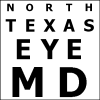Refractive Errors
Refractive errors occur when light does not focus properly on the retina because of the shape of the eye. The resulting image is blurred. Common refractive errors are myopia (nearsightedness), hyperopia (farsightedness), astigmatism (distorted vision), and presbyopia (aging eyes).
A myopic eye is longer than a normal eye or has a cornea that is too steep, causing light rays to focus in front of the retina instead of on it. With myopia, close objects appear clear, but distant ones appear blurred. Myopia is corrected with "minus" (concave) lenses.
A hyperopic eye is shorter than normal or has a cornea that is too flat. The light rays focus beyond the retina instead of on it (see below, left). Distant objects appear clear, but close ones appear blurred. For higher levels of hyperopia, even distance objects may appear blurry. Hyperopia is corrected by "plus" (convex) lenses.
The cornea of an astigmatic eye is curved unevenly (shaped more like a football than a basketball). Images focus in front of and beyond the retina, causing both close and distant objects to appear blurry. Cylindrical lenses, which have power in only one direction are used in conjunction with spherical lenses to correct for astigmatism.
Presbyopia refers to the hardening of the lens that occurs with age. After the age of 40, the lens becomes more rigid and cannot change shape as easily to accommodate near objects. This makes reading and other tasks performed at close range difficult. Presbyopia can occur in combination with any of the other three refractive errors. Presbyopia can be corrected with reading glasses, bifocals, trifocals, progressive lenses, multifocal contact lenses, monovision contact lenses (correcting one eye for near, one for distance), monovision LASIK, or presbyopia-correcting intraocular lenses (Restor, Rezoom, Crystalens).
Correction of Refractive Errors
Refractive errors are usually corrected with eyeglasses or contact lenses. Sometimes surgery is needed or desirable. Some common surgical procedures include the following:
- Laser vision correction is a term that describes the use of the excimer laser to reshape the cornea, eliminating the need for glasses. Photorefractive keratectomy (PRK) was the first procedure done with the laser and is still performed routinely today. Laser in-situ keratomileusis (LASIK) is a variation on PRK that involves the creation of a protective corneal flap using either a blade or a laser.
- Intrastromal corneal rings are crescent-shaped plastic segments implanted in the cornea to flatten the cornea and correct mild nearsightedness. They have recently seen some use in patients with Keratoconus who have become contact lens intolerant but have not reached the stage where they require a corneal transplant.
- Two "Phakic" intraocular lenses (IOL) are available for high myopia. These lenses are similar to a contact lens, except that they are implanted inside the eye to correct vision. They differ from intraocular lenses that are implanted at the time of cataract surgery by the fact that the natural lens inside the eye is not removed, as it is with a cataract. The Verisyse lens is implanted inside the eye between the iris and cornea and attaches to the iris. The Implantable Collamer Lens (ICL) is implanted into the space behind the iris and in front of the natural lens inside the eye. Both lenses have the advantage of correcting higher levels of near-sightedness than can be done with the excimer laser.
- Multifocal intraocular lenses (Restor, ReZoom) and Pseudo-Accommodating lenses (Crystalens) are used to correct presbyopia in conjunction with cataract removal or as an elective procedure termed Refractive Lens Exchange (RLE).
If you are considering any of these surgical procedures, it is important to discuss them with your ophthalmologist (Eye M.D.) so as to make an informed decision about whether refractive surgery is right for you. Sometimes the best option is to choose eyeglasses or contact lenses instead of surgery to correct a refractive error. Side effects of any of these refractive surgery techniques include blurring, glare, poor night vision, corneal scarring, or permanent vision loss. No one method is known to be better than another. The most appropriate method depends on the specific condition and lifestyle of the patient.
